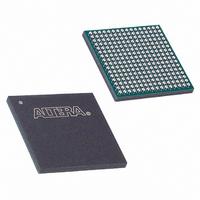EP2C5F256C8N Altera, EP2C5F256C8N Datasheet - Page 67

EP2C5F256C8N
Manufacturer Part Number
EP2C5F256C8N
Description
IC CYCLONE II FPGA 5K 256-FBGA
Manufacturer
Altera
Series
Cyclone® IIr
Datasheet
1.EP2C5T144C8N.pdf
(168 pages)
Specifications of EP2C5F256C8N
Number Of Logic Elements/cells
4608
Number Of Labs/clbs
288
Total Ram Bits
119808
Number Of I /o
158
Voltage - Supply
1.15 V ~ 1.25 V
Mounting Type
Surface Mount
Operating Temperature
0°C ~ 85°C
Package / Case
256-FBGA
No. Of Logic Blocks
288
Family Type
Cyclone II
No. Of I/o's
158
I/o Supply Voltage
3.3V
Operating Frequency Max
320MHz
Operating Temperature Range
0°C To +85°C
Rohs Compliant
Yes
Lead Free Status / RoHS Status
Lead free / RoHS Compliant
Number Of Gates
-
Other names
544-1656
Available stocks
Company
Part Number
Manufacturer
Quantity
Price
Company:
Part Number:
EP2C5F256C8N
Manufacturer:
ALTBRA
Quantity:
36
Company:
Part Number:
EP2C5F256C8N
Manufacturer:
ALTERA82
Quantity:
1 080
Part Number:
EP2C5F256C8N
Manufacturer:
ALTERA/阿尔特拉
Quantity:
20 000
Altera Corporation
February 2007
f
You can use I/O pins and internal logic to implement a high-speed I/O
receiver and transmitter in Cyclone II devices. Cyclone II devices do not
contain dedicated serialization or deserialization circuitry. Therefore,
shift registers, internal PLLs, and IOEs are used to perform
serial-to-parallel conversions on incoming data and parallel-to-serial
conversion on outgoing data.
The maximum internal clock frequency for a receiver and for a
transmitter is 402.5 MHz. The maximum input data rate of 805 Mbps and
the maximum output data rate of 640 Mbps is only achieved when DDIO
registers are used. The LVDS standard does not require an input
reference voltage, but it does require a 100-Ω termination resistor
between the two signals at the input buffer. An external resistor network
is required on the transmitter side.
For more information on Cyclone II differential I/O interfaces, see the
High-Speed Differential Interfaces in Cyclone II Devices chapter in Volume 1
of the Cyclone II Device Handbook.
Series On-Chip Termination
On-chip termination helps to prevent reflections and maintain signal
integrity. This also minimizes the need for external resistors in high pin
count ball grid array (BGA) packages. Cyclone II devices provide I/O
driver on-chip impedance matching and on-chip series termination for
single-ended outputs and bidirectional pins.
Note to
(1)
EP2C70
Table 2–18. Cyclone II Device LVDS Channels (Part 2 of 2)
The first number represents the number of bidirectional I/O pins which can be
used as inputs or outputs. The number in parenthesis includes dedicated clock
input pin pairs which can only be used as inputs.
Table
Device
2–18:
Pin Count
672
896
Cyclone II Device Handbook, Volume 1
Cyclone II Architecture
Number of LVDS
Channels
160 (168)
257 (265)
(1)
2–55















